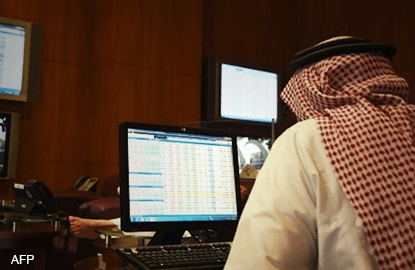
This article first appeared in The Edge Financial Daily, on January 11, 2016.
SAUDI Arabia and Russia are on opposing sides in the Syrian war, and fierce competitors in the global oil market. Both suffer from an overreliance on oil for fiscal revenue and a lack of interest in political and economic change. Now, the governments of both countries have come up with similar ideas for boosting their lagging economies.
Saudi Aramco, the government-owned oil company that claims to produce “roughly one in every eight barrels of the world’s oil supply,” has announced that it would seek to go public, either by listing its own shares on the stock exchange or by selling stock in a “bundle of its downstream subsidiaries.” Russia, for its part, is considering the privatisation of 19.5% of Rosneft, the country’s biggest oil company that is now 69.5% state-owned.
It is clear why officials in both oil countries have turned to privatisation. Last year, Saudi Arabia overshot its spending target by 13% and revenue came in 15% lower than planned. It paid for the deficit by dipping into its international reserves, which declined 13%.
Russia has hung on to a bigger share of its reserves — they only dropped by about 5% in 2015 — but was only able to do so by means of a steep devaluation, which the Saudis avoided. Russia’s budget deficit approached 3% of gross domestic product (GDP) by the end of the year.
Since both countries may have missed the chance to make their economies less oil-dependent while oil prices were high (oil rent accounts for 43.6% of Saudi GDP and 13.7% of Russia’s economic output, according to the World Bank), asset sell-offs could be the most readily available response.
I doubt, however, that Russia will sell the Rosneft stake this year. And if Saudi Arabia does take Saudi Aramco public, the kingdom’s rulers and potential investors should remember Rosneft’s history.
Russia first sold off part of the oil giant in July 2006, in a “people’s IPO”: The public was invited to subscribe to shares. About 150,000 Russians did, at US$7.55 (RM33.37) per share. Until the middle of 2008, investors were ahead. Then the global financial crisis erupted, and their luck ran out. Rosneft shares topped the initial public offering (IPO) price for brief periods, but never rose above US$9.44.
The oil collapse of 2014 did them in. Rosneft now trades at US$3.16 per share, and its market capitalisation, US$33.4 billion, is about one-ninth of Exxon Mobil’s, though its revenue is about one-third of the US company’s.
Rosneft experienced a steeper fall than its industry peers in other countries. That has to do with the way the company is managed and what it stands for. Rosneft’s chief executive Igor Sechin is a close associate of President Vladimir Putin.
After Russia annexed Crimea in 2014, both Sechin and Rosneft were subject to Western sanctions, hurting the company’s ability to borrow abroad to refinance its huge debt. Rosneft has been paying the debt down, to US$46.8 billion in September 2015, from US$58.5 billion at the end of 2014.
Investors view Rosneft’s fortunes as tied to those of Putin and his regime, which is known for using big state companies as political tools and milking them for money for side projects that cannot be financed from the government budget. These companies operate more like corruption-ridden slush funds than like businesses. No wonder the markets do not see Rosneft as a particularly safe investment.
According to Finance Minister Anton Siluanov, the Russian government wants at least 500 billion rubles (RM29.52 billion) for the 19.5% Rosneft stake, and it has no intention of relinquishing control (it would still own 50% plus one share after the sale).
That would value the entire company at US$34 billion. This is not an impossible price, but it will not be easy to raise that much given the continuing slide in oil prices, and it will be even harder to find a buyer for the whole stake. BP, which now owns 19.85% of Rosneft, is not overjoyed with the investment, because sanctions and debt repayments have forced the Russian company to put off major projects.
The stock price of Saudi Aramco, too, may suffer from the perception that the company is too close to an unpredictable government. Saudi Arabia is fighting a war in Yemen, it is involved in Syria, and tensions are rising with its main regional rival, Iran.
Investors might have trouble pricing in these conditions. At the same time, the Saudi rulers will probably want to sell Saudi Aramco shares at a profit multiple close to that of the Saudi stock market, and, at about 14%, it is as high as for the Dow Jones Industrial Average.
The Tadawul stock index, which tracks Saudi stocks, has performed as badly as Russia’s RTS lately.
The Saudi equity market has deeper problems than the Russian one, though. Foreign investors have only limited access to it since June 2015 — and these only are big institutional investors. The Saudi government wanted their help in reducing volatility: The market depends on local retail investors who do not often have a good grasp of the fundamentals.

The Tadawul endured a major crash in 2006, from which it has never fully recovered, and foreign investors’ interest has been tepid because of the still-high valuations.
Even if Saudi Aramco is listed outside of Saudi Arabia, it would be weighed down by the government’s iron grip on its management.
Buying stock in such companies essentially means placing bets on the revival of the oil market, which both Rosneft and Saudi Aramco keep flooding with crude because their governments need the revenue regardless of global prices. It also means betting on the geopolitical success of Putin and King Salman. That is a proposition even insiders might find scary in 2016. — Bloomberg View
Leonid Bershidsky is a Bloomberg View columnist.